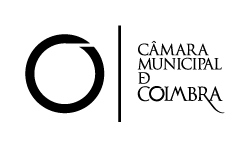Coimbra: Town&Region
The IWE2012 will be held in the College of Education ESEC, in Coimbra.
-
Location
Coimbra is located in the central part of the country, in a region called “Beirasâ€. “Beiras†is the traditional name of a region running south of Douro River and north of Tagus River. This region is made up of two contrasting areas. The extensive beaches and fishing villages lie along the Atlantic coastline, while in the interior the mountains dominate the landscape. In the heart of this hinterland rises the Serra da Estrela (Estrela Mountain Range), the highest in continental Portugal. This is where the Mondego River rises, later running down to the city of Coimbra. Here, the river that over the centuries has had so many odes composed to it by generations of university students flows out into the Atlantic Ocean by the lengthy Figueira da Foz beach.
-
General Description
Coimbra has an area of 316,8Km2 and around 140 000 inhabitants. Coimbra has a rich history. Its university is one of the oldest in the world, having been founded in 1290 by King Dinis. Six of Portugal’s Kings were born here. In the Middle Ages, from 1139 until 1256, Coimbra was the capital of Portugal. The original name in the Roman period was Aeminium, and it later developed under the influence of the greater nearby town of Conimbriga (today Coninbriga is a large archaeological site of great interest).Known as the “city of students”, its daily life is marked by their presence.
The academic traditions are very important in the town and student’s life, with the highlight being the Festa da Queima das Fitas in May, an event that marks the end of the academic year. During special celebrations like this, students use black academic gowns, giving a special ambience to the streets. The city of Coimbra is divided into two distinct areas, the “baixa” (lower town) by the river, where most of the city’s commercial activity is concentrated, and the “alta” (upper town), the older part, which is entered through the Arco de Almedina, a gateway that brings back memories of the Arab occupation, since “Medina” means city in Arabic.
The upper town consists of steep narrow streets, where the “republics” (typical communal student residences) are to be found, as well as some of the city’s most important buildings. Coimbra unique appearance may be admired as a harmonious whole from the other side of the river. It deserves a lengthy stay, for as is said in a fado sung by the students, it has even “greater charm at the moment of farewell”.
-
Transports
The main mean of transport within the city is the bus. The city of Coimbra has quite a good bus service, there are buses every day and at every hour that will take you to almost any point of town.
The main buses in Coimbra that go past ESEC are the numbers 5, 7, 7T, 24T, 34 and 37 – all of wich will take you to the city centre, except for the number 37 bus, which goes from Quinta das Flores (near Coimbrashopping) to the University Hospital.
As College of Education is fairly central, it is easy to get to the centre of town.
Praça da República is around 15 minutes walking distance or 5 minutes by bus.To travel by bus you must have a bus ticket or a bus pass, which you can buy them in various quiosks in Coimbra. Bus tickets can have three or eleven trips, which you can use on any SMTUC bus service and they cost 2,20€ or 6,40€. If you don’t have a ticket before you get on a bus, you can buy one from the bus driver – this is more expensive and will cost you 1,60€ for just one bus journey, you can’t use it on any other bus.There’s also a taxi station right in front of the college.
-
Meals and Restaurants
Portuguese gastronomy is much diversified. You will find many typical fish and meat dishes, sweets and desserts, always accompanied by good-quality wines and cheese.The Portuguese usually have lunch between 12h30 and 14h00 and dinner at 20h00 / 21h00. Dinner is usually a cooked substantial meal.
Besides many restaurants for all prices, there are also cafés and snack bars, which prepare light meals and snacks. “Going out for a meal” is very common because having a meal in a restaurant is relatively cheap. Most restaurants are open from 12h00 to 14h30 and from 19h00 to 00h00.
-
Commerce
Shops are usually open from 9h00 to 13h00 and 15h to 19h from Monday to Friday and from 9h00 to 13h00 on Saturday. Shopping Centres are open everyday from 10h00 to 00h00.Usually the supermarkets are open until 21h00 and hypermarkets are open from 10h00 to 23h00 from Monday to Saturday and from 9h00 to 13h00 on Sunday. The modern shopping centre Dolce Vita is right in front of ESEC and there are tenths of nice shops for souvenirs.
-
Emmergencies / Hospitals
Hospitals have emergency services open 24 hours a day. The two main hospitals in the city are: Hospital da Universidade de Coimbra and Hospital dos Covões. The University Hospital is located at Praceta Mota Pinto, near Celas, and you can get there on the number 37 bus, which takes you close to the main entrance. To contact the hospital you can use the following phone number: 00351 239 400 400.
There are also many other clinics and health centers. Pharmacies are open from Monday to Friday (9h00 to 13h00 and 15h00 to 19h00) and on Saturdays (9h00 to 13h00). There are always pharmacies open during weekend and at night. European emergency number is 112.
See also: Coimbra Guide






